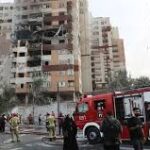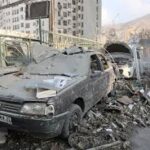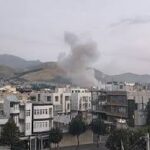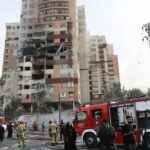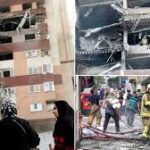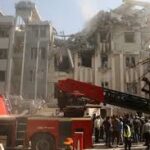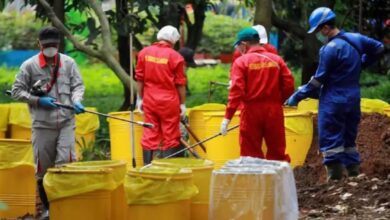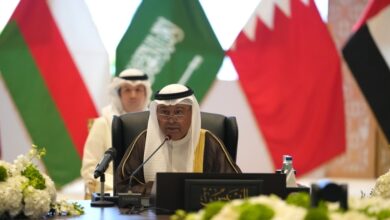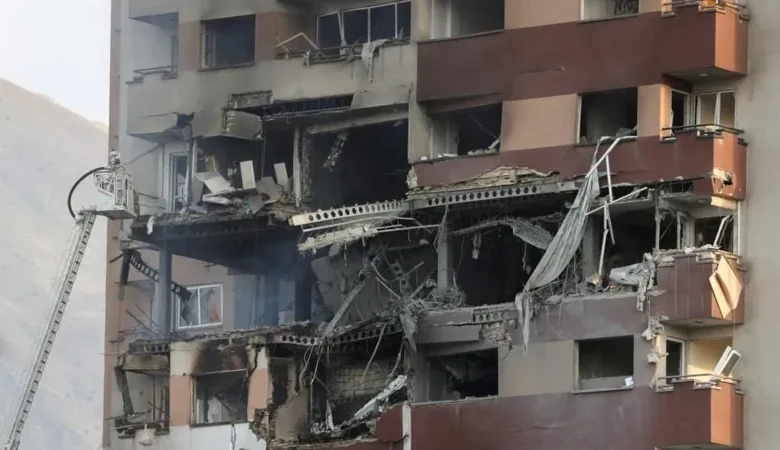
In a dramatic escalation of tensions in the region, the Israeli military has confirmed it launched a broad wave of airstrikes targeting Iranian military infrastructure and nuclear facilities.
Among the targets reportedly struck was central Tehran, marking one of the boldest direct military actions by Israel inside Iran’s territory to date.
The strikes are said to have resulted in significant damage and multiple casualties, including the deaths of senior Iranian military commanders and six nuclear scientists, according to Iranian state media.
In response, Iran’s Supreme Leader Ayatollah Ali Khamenei condemned the attack, calling it a “crime” and warning that Israel “must expect severe punishment.” Khamenei vowed retaliation for what he described as a deliberate and coordinated act of aggression against Iran’s sovereignty.
Shortly after the Israeli strikes, the Israeli military reported that Iran launched more than 100 drones, some of which appeared to be aimed at Israeli territory and regional targets. The Israeli army stated that its air defense systems are actively working to intercept and neutralize the incoming drones.
Israeli Prime Minister Benjamin Netanyahu addressed the nation and the international community, stating that military operations against Iran “will continue as long as necessary.” He emphasized that the strikes were aimed at eliminating what he described as “imminent threats” to Israeli national security.
Meanwhile, United States Secretary of State Marco Rubio issued a statement clarifying that the United States was not involved in the Israeli military operation. Rubio also warned Iran against targeting U.S. military bases or personnel in the region, saying that “any such action would be met with a decisive response.”
Iranian media outlets have released video footage showing the aftermath of the strikes in Tehran, including damage to a government complex known as the Kasr Shirin Palace, also referred to as a social welfare building. The footage, shared widely on social media and verified by Al Jazeera’s Sanad agency, depicts rubble and structural damage around the facility.
Elsewhere in Iran, public outrage is intensifying. In the city of Qom, hundreds of demonstrators gathered at the Jamkaran Mosque, demanding immediate and forceful retaliation against Israel. Protesters waved Iranian flags and chanted anti-Israeli slogans, calling on the government to uphold national honor and respond to the attacks. Qom, one of Iran’s most sacred cities, lies about 140 kilometers south of Tehran.
Reports indicate that the strikes have resulted in numerous civilian and military casualties, including women and children, fueling further anger across the country.
This marks one of the most dangerous escalations between Israel and Iran in recent history, with regional and global implications. Analysts warn that the situation may spiral further unless de-escalation efforts are undertaken swiftly.
Israel’s strikes on Iran resemble its campaign against Hezbollah last year, involving waves of intense air raids, targeted killings of top commanders, and destruction of military assets. While Israel describes these strikes as “preemptive”, the scale suggests a broader decapitation strategy aimed at weakening the Iranian regime’s leadership and command structure.
Unlike Hezbollah, Iran has a much larger population (90 million) and a more complex military infrastructure, making it better equipped to absorb attacks and prolong the conflict. Analysts suggest Israel may be aiming for a quick knockout, while Iran may seek to drag out the confrontation and win through attrition.
Israel claims to have assassinated Iran’s three most senior military leaders Mohammad Bagheri (Chief of Staff), Hossein Salami (IRGC Commander) and Gholam Ali Rashid (Commander of Khatam al-Anbiya Central HQ)
Over 200 Israeli fighter jets struck more than 100 targets across Iran overnight.
According to Al Jazeera’s Dorsa Jabbari, this assault far exceeds the 2024 tit-for-tat attacks, both in scope and surprise.
Unlike past incidents, which involved warnings, the latest operation came without prior notice and hit multiple cities—including Tehran, Isfahan, Natanz, Tabriz, and Kermanshah. The attacks are ongoing and appear to be part of a sustained military campaign rather than a limited tactical strike.
This marks a dangerous escalation, breaking psychological and strategic boundaries not crossed since the 1979 Iranian Revolution, and signaling the potential for a prolonged, large-scale conflict.











